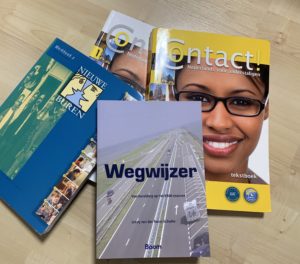Today I’ll share some tips regarding the Spreken (Speaking) exam. In my last four articles of the series, I’ve talked about how to prepare for the first four papers- Reading, Listening, Writing, and KNM. Today’s series is about the fourth paper- Spreken (Speaking).
Communicating in Dutch, even in basic Dutch, can be rather intimidating for many, but the good news is that it is doable. In my classes, I often have students who begin with their alphabet knowledge in Dutch and then with their diligence and practice, they qualify for the speaking paper. However, this requires help from the trainers. And of course, a lot of practice.
So how to approach this exam? I get a lot of questions from the students in the language class as to how to prepare for this paper, as many students find the speaking paper most challenging.
Information about the Speaking exam
The required level of competency for the Speaking exam, like all other papers, is at A2, for the time being. The speaking exam is a computer-based exam. The duration of this exam is for 35minutes. The exam consists of two sections. In the first section you will see videos in which the presenter will ask you a question. You record your answer, save it, and progress to the next. There are between 10-12 such questions. The questions are usually based on our daily life situations. For example, Hoe vaak gebruikt u een computer? (How often do you use a computer?) Sometimes the questions ask you to express your opinions and the reasoning behind your opinions. For example, Nederlandse kinderen kunnen heel graag zwemmen. Wat vindt u daarvan? (The Dutch Children like to swim. What do you think about that?) These questions require good practice.
In the second section you’ll again see some videos with a small conversation, followed by multiple-choice questions. From the video, you need to guess the correct response. The possible answers are given in the multiple-choice, and you need to choose the most suitable response from there. This second section has around 12 questions, too. Most students find this section to be easier than the first one.
You need to attempt both parts of the exam! You also need to pass in both sections!
Tips to tackle this exam
here are a few tips to tackle this paper.

Short, easy, and correct sentences
One of the points that you must understand is that you’ve limited time to give your answers. It is my advice to speak your answers in simple, short, and logical sentences. Of course, grammatical correctness is of utmost importance. But when you use concise and easy sentences, your chances of making errors in grammar are drastically reduced. As I’ve stated in my previous series, I shall also stress the habit of building up your vocabulary. Learning at least five new words every day could give you a good jump start in tackling this exam!
Practice the Word-order
By now you know that Dutch Grammar is not like English grammar, and the word order is different from that of English. From the very beginning when you start taking the Dutch lessons, please make sure you learn the workings of Dutch sentence construction. One tip that I can give at this point is to focus on the positioning of the verbs. Dutch verbs, both regular and irregular ones, have different ways of conjugation. Besides, their positioning change if you’re writing complex sentences, using the main sentence and a clause. These areas are undoubtedly areas of concern.

Only Present tense?
Most of the answers to the first question would require you to answer in the present tense. But please do NOT forget to practice the perfectum. (Ik heb vandaag pasta gekookt!) And If I, were you, I’d not forget the past tense either. There are some specific questions that cannot be answered at all without knowing the past tense. Also, please focus on the questions. Some parts of your answers are to be found in the questions.
Exam in reality
In the exam hall, you’d be sitting with several other candidates taking the exam. You would wear a headset and a microphone would be connected to your PC. Some students find it rather disturbing as others start speaking into the headphones to record their answers. Please do not get distracted and start speaking your own answers clearly. Focus on what you want to say and don’t forget to record. You can always erase and re-record your answers, but be aware of the time!
Lastly, listen to the questions carefully, first frame the answer in your mind, when you are ready, record it. Succes met de toets!
An article by Chaitali Sengupta. She is the founder of the language institute ON-POINT COMMUNICATIONS and gives online Inburgeringsclasses.
















